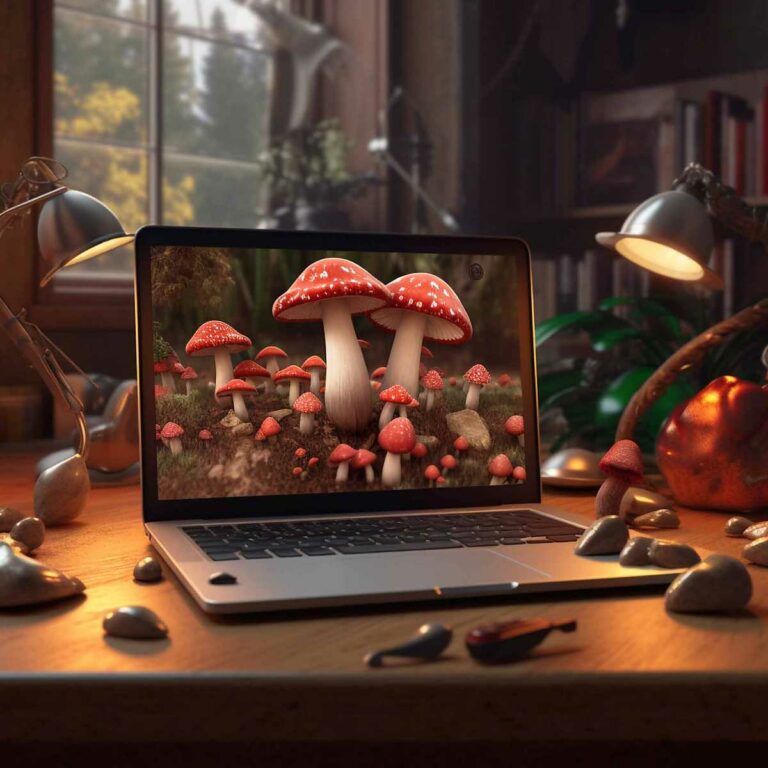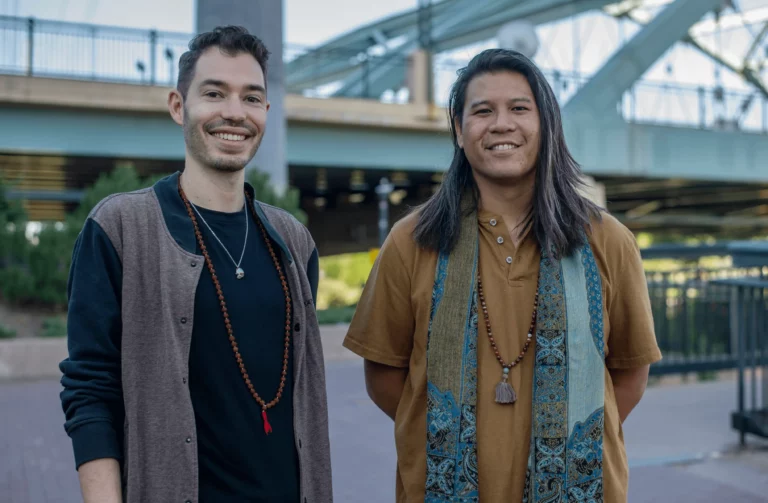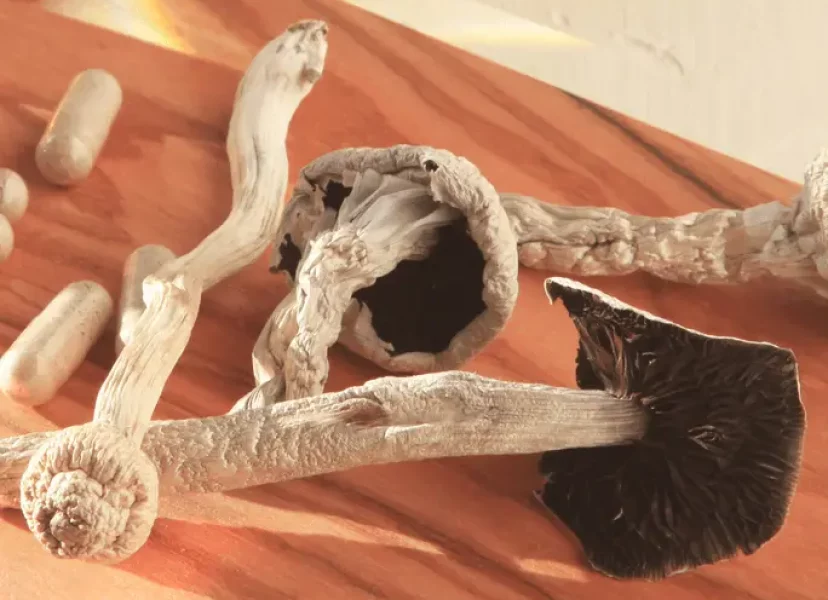Modern science has come to learn much about the human brain. With the development of imaging technologies like fMRI and EEG, scientists can now study the dynamic, gelatinous structure that contemplates its own existence as a function of our human consciousness.
These methods of observation help us form relationships between specific brain regions and their functions. By isolating the structural constituents responsible for memory, motor skills, and emotion, we’re now able to track neurological activity and even follow the pathology of trauma and disease.
Yet even with such advancements, major limitations remain. In fact, there’s much more that we don’t know about the brain, compared to what we do. With all of the information currently available, no consensus exists thus far on the fundamental mechanisms of consciousness or even on the function of sleep and dreaming.
Today, we find that psychedelic research not only proposes novel treatment paradigms in mental health care, but may be a key resource for understanding how the brain produces phenomenal experience, or qualia.
Studying the effects that these chemicals have on the brain might clue not just our comprehension on how consciousness operates, but also on treating both physical and emotional problems that challenge our waking lives. Today we’ll be doing just that.
First we’ll offer some background on brain injuries and on the co-occurring disorders associated with them. Then, we’ll review relevant studies on the secondary neurological damage caused by traumatic and non-traumatic brain injuries, along with the neuropharmacological effects of psychedelics.
We’ll use our findings to better understand how psychedelics can influence the future of brain injury treatment. Before closing off, we’ll venture through several anecdotal reports received by Psychedelic Passage survey respondents who use psychedelic medicine to treat the effects of their traumatic brain injury.
An Overview of Brain Injuries & Co-Occurring Disorders
Traumatic brain injuries (TBIs) are the result of a blow or jolt to the head, sometimes caused by a penetrating force that pierces the skull and brain tissue. Non-traumatic brain injuries (NTBI) can be caused by a multitude of reasons. One being oxygen deprivation resulting in ischemic stroke.
TBIs vary in severity, ranging from mild injuries that only temporarily affect brain cells, to more extreme cases in which bruising or bleeding may occur in the brain.
Mild TBIs are often diagnosed as concussions. Symptoms include headaches, speech abnormalities, loss of balance, sensitivity to light or sound, and temporary loss of consciousness. Typically, they require little to no medical treatment. Prolonged rest and pain relievers usually do the trick.
Moderate to severe TBIs often involve a longer duration of consciousness loss, seizures, numbness in the fingers and toes, an inability to awaken from sleep, and loss of motor coordination. Its effects can cause deep confusion in the victim, slurred speech, and unusual combative behavior. A Psychedelic Passage survey respondent describes day-to-day life with a TBI:
“Obviously it’s different for everyone, but for me it’s like losing your soul and never knowing if you’ll get it back. It’s like being in a 24/7 haze or having blinders on. Somehow I’m aware of the loss and I get a glimpse or reminder of what I’m missing, but it’s always so far out of reach.
It really makes you question who you are and if your mind was ever really yours to begin with. I remember much less than before, and even when I do, I can’t really visualize or relive the moment. The memories feel empty and very broken or disjointed sometimes. Time is a blur.
Thoughts and ideas vanish out of thin air often with only a vague notion being left. Not a day goes by where I feel normal or ok, but you just try to continue somehow anyways.”
-Anonymous Survey Respondent
Such cases may require the prescription of anti-seizure and coma-inducing drugs to limit secondary neurological damage, and surgery may even be required to stop brain hemorrhaging and repair fractures of the skull. After emergency care though, extensive physical rehabilitation therapies are necessary to relearn skills such as walking and talking.
After a severe brain injury, long term psychological issues often arise. These can include anxiety, depression, addiction, and PTSD. Thus, mental health therapy is often another necessary component to brain injury rehabilitation.
Abnormalities in The Injured Brain
Neuroinflammation
One of the hallmarks of TBI and NTBI is neuroinflammation. Microglia play a critical role in the injured brain by producing anti-inflammatory mediators. Immediately following a brain injury, these inflammatory mediators help to promote neurological recovery.
However, their ongoing effects tend to orchestrate excessive amounts of proinflammatory mediators which can and often do exacerbate neural damage by hindering repair (Xiong et al., 2018). These reperfusion injuries result in what is called ‘secondary cell death’.
Secondary cell death refers to the biological changes in cells and tissues that lead to their death or dysfunction (Adams et al., 1983). The largest contributor to secondary cell death after TBI and stroke is neuroinflammation (Acosta et al., 2015).
Prolonged neuroinflammation has been shown to chronically reduce the dendritic spine density of neurons for more than one year following brain injury (Ertürk et al, 2016). This reduction further perpetuates the brain’s inflammatory response which leads to long-lasting cognitive and physical impairments (Hernandez-Ontiveros et al., 2013).
Blood-Brain Barrier Breakdown
The blood-brain barrier (BBB) is a semi-permeable filter-like mechanism that prevents macromolecules and toxins from entering the brain through the bloodstream. BBB breakdown perpetuates brain injury and is a result of the microglia overactivity mentioned above.
In some cases, microglia immune cells release cytokines which incite inflammatory signaling. When cytokines act via IL-1β on the Sonic Hedgehog gene (SHH), activity of tight junction proteins is reduced, leading to leakage in the BBB (Wang et al., 2014). Immune cells are disproportionately activated by this downregulation, resulting in a proinflammatory reaction.
Oxidative Stress
Cytokine production is further enhanced by hypoxia, a secondary injury of TBI and the cause for ischemic stroke. Hypoxia occurs when there is low oxygen in body tissues, increasing the risk for cerebral hypoxia.
Oxidative stress as incited by microglia, is another contributor to inflammation. M2 microglia release anti-inflammatory mediators. M1 microglia release proinflammatory mediators. When M2 is upregulated following a TBI injury, M1 is also upregulated.
The release of these proinflammatory mediators results in high levels of reactive oxygen species (ROS). Oxidative stress then occurs as a result of the imbalances between ROS and reactive nitrogen species (RNS).
This increase can be detrimental as it disrupts normal cell function and can cause cell membrane lipoperoxidation (Wang et al, 2014). Lipoperoxidation occurs as free radicals attack lipids, which causes extensive neuronal cell death, leading to cortical and hippocampal neurodegeneration in TBI and stroke inflicted brains.
Endoplasmic Reticulum Stress (ERS)
The endoplasmic reticulum (ER) is a membrane system found inside of a cell which helps to transport proteins. Stressors such as TBIs alter the ER’s conditions and cause dysfunctions in protein sorting which lead to their accumulation (Oaks & Papa., 2017).
ERS upregulates expression of Sigma-1 receptors (S1R) which leads to cellular apoptosis, or programmed cell death (Szegezdi et al., 2006). This is a major contributor to the cognitive deficits that result from strokes and TBIs.
Dopamine & Glutamate
Underlying the motor and cognitive deficits associated with TBIs is a significant decrease in dopamine transporters and dopamine uptake (Wagner et al., 2005). This decrease is associated with the 256% increase of extracellular glutamate levels experienced by TBI victims (Hinzman et al., 2010).
Impaired Neurogenesis & Neuroplasticity
Neurogenesis is the process by which nerve cells are created in the brain. The hippocampus, responsible for learning, memory, and mood, is often severely affected by stroke and TBI. Following a TBI, neurogenesis has shown to be impaired in the hippocampus (Wang et al., 2016).
One of the first studies on the matter found that increasing neurogenesis is associated with improved neurological outcome following a TBI (Lu et al., 2003). Neuroplasticity takes place as the brain forms and reorganizes connections between nerve cells following exposure to new internal and external stimuli.
It’s essentially how the brain creates or alters contextual associations when we learn new information. However, following a TBI, nerve-cell circuits are damaged, making it vital for any novel TBI treatment to promote neuroplasticity as means to improve synaptic signaling (Su et al., 2016).
The Effects of Psychedelics on The Injured Brain
As we’ve observed, there are several mechanisms involved in the secondary injury cascades apparent in stroke and TBI. Tumor necrosis factor alpha (TNF-α) plays a significant role in mediating proinflammatory markers.
In a 2008 study conducted by Yu et al., researchers investigated the inflammatory effects of 5-HT2AR activation using the agonist (R)-2,5-dimethoxy-4-iodoamphetamine. They found that selective activation of 5-HT2A receptors initiates a super-potent blockade of proinflammatory molecules.
Psychedelics like LSD, DMT, mescaline, and psilocybin are 5-HT2A agonists, meaning they bind to 5-HT2A receptors with high affinity (Halberstadt, 2014). These results indicate that psychedelics’ agonism of serotonin receptors may block the inflammatory effects of TNF-α, reducing neuroinflammation associated with stroke and TBI.
N,N-dimethyltryptamine (DMT) binds to SIG-1R (Fontanilla et al., 2009). A 2020 study conducted by Nardai and colleagues studied the effects of DMT following ischemia-induced brain injury. The rats treated with DMT demonstrated lower stroke-induced brain lesion volume (p=.0373) along with significantly increased functional regeneration compared to control subjects (p=.0084).
Here, DMT is shown to reduce secondary brain injury and increase functional recovery following stroke by decreasing levels of the proinflammatory proteins TNF-α, IL1-β, IL-6, and increasing anti-inflammatory IL-10 expression.
Ayahuasca, a psychedelic brew native to the Amazon region, contains harmine, tetrahydroharmine (THH) and harmaline. These β-carboline alkaloids have potent antioxidant and anti-inflammatory properties.
The ayahuasca constituents P.viridis, B.caapi, and M.hostilis demonstrated both strong and very strong antioxidant activity. Notably, P.haramla appeared to have poor antioxidant properties (Goncalves et al., 2020).
In a 2017 study, Morales-Garcia and colleagues looked into the alkaloids present in ayahuasca by observing neural progenitor cells from adult mice. Findings concluded that the monoamine oxidase inhibitors (MAOIs) contained in ayahuasca stimulate gliogenesis and the migration of neural progenitor cells in the hippocampus.
These studies implicate ayahuasca’s antioxidants in the reduction of neuroinflammation and oxidative stress. MAOIs contained in the brew stimulate hippocampal neurogenesis, translating promising neuroprotective psychedelic treatment strategies for brain injury.
In the 1980s a research chemical called 8-OH-DPAT was developed to study the 5-HT1A (serotonin) receptors. 8-OH-DPAT is a 5-HT1A agonist, meaning it has an affinity for 5-HT1A receptors, similar to LSD, psilocybin, and DMT.
Myazaki and Asanuma led a 2016 study which found that 8-OH-DPAT activates the expression of MT-1/-2 and Nfr2, which function as antioxidants. This indicates that serotonergic psychedelics may also reduce oxidative stress by prompting MT-1/-2 and Nfr2 expression.
The pathology of Parkinson’s disease (PD) is very similar to the cascade of secondary pathological events after TBI (Delic et al., 2020). This is unsurprising since epidemiologic studies have already found strong associations between TBI and an increased risk of PD. In fact, among military veterans, mTBI has been associated with 56% increased risk of developing parkinsonism (Gardner et al., 2018).
Psilocin, LSD, DMT, and mescaline, have a high affinity for trace amine-associated receptor 1 (TAAR1). TAAR1 is a protein that regulates serotonin, glutamine, and dopamine. RO5166017 is a TAAR1 agonist drug like serotonergic psychedelics are.
In a 2015 study led by Alvarson et al., RO5166017 was given to TAAR1 knockout-mice (mice with inactivated TAARs). The rats were also previously administered 6-OHDA (a neurotoxin that models PD in rats).
RO5166017 counteracted dyskinesia by preventing the release of corticostriatal glutamate. Dyskinesia is a motor abnormality associated with PD, similar to dystonia from TBI. In PD patients, dopaminergic transmissions degenerate and cause excessive glutamate levels.
As mentioned earlier, the motor and cognitive deficits associated with TBIs are also caused by a decrease in dopamine uptake, which leads to a 256% increase of extracellular glutamate levels.
TAAR1 agonists were found to decrease glutamate in PD patients by regulating pre- and post-synaptic corticostriatal glutamate, and preventing the degeneration of dopaminergic neurons. Because PD and TBIs are pathologically alike, these findings suggest that TAAR1 agonists like DMT, psilocybin mushrooms, and LSD, could be an effective treatment for both dyskinesia and dystonia.
By binding to SIG-1Rs, DMT has been found to stimulate dendritic cells and reduce expression of IL-1β (Szabo et al., 2016). In recent years, mRNA and protein expression measures have been used to confirm that DMT causes significant downregulation of IL-1B (Nardai et al., 2020).
Because IL-1B secretion causes blood-brain barrier breakdown, this downregulation of IL-1B suggests that DMT may effectively reduce peripheral inflammation associated with TBI and stroke.
A 2016 study by Tianfang Jiang and colleagues looked into the role of oxidative stress in the pathogenesis of neurodegenerative diseases. They found that activation of SIG-1R may prevent ERS-induced apoptosis, or cell death. As we know, DMT binds to SIG-1R.
This means that DMT’s affinity to SIG-1R may help reduce hypoxia-induced cellular apoptosis in stroke and TBI by stabilizing levels of Bax and Bcl-2 within granulosa cells, and by balancing C/EBP, ATF4, ATF6 protein.
Another 2016 study led by Szabo et al. tested the hypothesis that DMT plays a neuroprotective role by SIG-1R activation. Using in vitro human cortical neurons, researchers found that DMT robustly increases the survival of pluripotent stem cells, monocyte-derived macrophages, and dendritic cells in severe hypoxia.
They also found that DMT reduces the expression of the hypoxia-inducible factor 1 (HIF-1), further confirming the potential role of DMT in ameliorating cellular stress caused by hypoxia. Findings indicate that DMT’s activation of SIG-1R may mitigate hypoxia-induced intercellular stress by decreasing expression of HIF-1 and increasing cell survival rates in NTBI and TBI victims.
In mice, SIG-1R contributes to the ERS response, likely through up-regulation of antioxidants, NQ01, and SOD (Pal et al., 2012). Its presence in neurons, astrocytes, and microglia, has been proven to stabilize neuritic outgrowth, myelination, synaptogenesis, and neuro-regeneration (Moritz et al., 2015).
The first and only clinical trial of a SIG-1R agonist for moderate-to-severe stroke treatment demonstrated clinically significant functional recovery in patients (Urfer et al., 2014).
Dakic et al. conducted the first study on 5-MeO-DMT, a close relative of DMT. They found that the toxin of Incilius alvarius positively altered human cerebral organoids by stimulating neuroplasticity, neuroprotection, and maturation of dendritic spines, while inhibiting neurodegenerative processes and necrosis, or cell death due to injury (Dakic et al., 2017).
Across the board, these studies offer strong support for DMT’s and 5-MeO-DMT’s use in TBI and stroke treatment. By activation of SIG-1R, the drug can upregulate antioxidants to reduce oxidative stress and inflammation.
Since dendritic spine density is significantly reduced following brain injury, DMT’s ability to regulate neuritic outgrowth while inhibiting neurodegeneration and cell death, may illustrate a novel approach for remedying TBI and reperfusion injuries from stroke.
DMT isn’t the only psychedelic that can promote neurogenesis and neuroplasticity. In fact, a 2021 study led by Shao et al., found that a single dose of psilocybin increased dendritic spine density and size by about 10%. This frontal cortex change was sustained after 1 month.
These findings are supported in a 2018 study by Calvin Ly et al., which found that serotonergic psychedelics robustly increase neuritogenesis and spinogenesis in vitro and in vivo. Stimulation of mTOR, 5-HT2A, and TrkB pathways induced these structural changes.
The study found that MDMA was more efficacious and LSD was more potent than ketamine at promoting this plasticity. A 2018 case study by Lin et al., combined psilocybin with mirror visual-feedback (MVF) to study its effect on phantom-limb pain resulting from an amputated leg.
This psilocybin-MVF combination produced synergistic effects that completely eliminated the subject’s phantom limb pain. These results were thought to be caused by the enhancement of MVF’s ability to ‘decondition’ paralysis through 5HTR-induced neuroplasticity.
Together, these studies suggest that psilocybin and LSD may offer promising avenues for cognitive and motor issues related to TBI and stroke, due to their robustness in increasing neuroplasticity, neurogenesis, and brain complexity (Casali et al., 2013).
A Review of Anecdotal Reports
The following reports were anonymously shared by Psychedelic Passage survey respondents who have recovered or are currently recovering from TBI. Thank you to all who contributed their stories.
“It’s like having a word at the tip of your tongue constantly but never being able to convey it (at least for me). When I take psychedelics (LSD, mushrooms, DMT), my brain feels whole again and I feel like I can actually think / feel like I used to before my mind was robbed.” -Anonymous Survey Respondent
“I have permanent progressive anterograde amnesia from my TBI and have next to 0 short term memory and major issues with making and storing new memories. Last summer (2021) I microdosed LSD every day for two months and remembered parts of almost every single day during this time.”
–Anonymous Survey Respondent
“I was suicidal in August after 3 years of dealing with my TBI. I had most of the normal symptoms: Nose sensitivity, irritability, headaches, pressure, inability to concentrate.. the list goes on. I had a violent outburst while trvaeling in August, in front of my son.
I didn’t hurt anyone, but I’ve never been so ashamed and embarrassed in my life, not even close. There were also potential legal issues so my anxiety went from horrible to unimaginable. When I got home, I desperately needed help. My prescriber put me on Lamictal which is a mood stabilizer…
It helped me so much with the irritability but nothing else. I have a 4 person support group here locally and one of them suggested we try microdosing mushrooms. We all take .5g, 3 days on, 3 days off. All of us have had significant improvement. It was nothing short of a miracle for me.
It’s the first time since my TBI that I felt like I made actual improvement... I’m still messed up but EVERY symptom I have is somewhat better. Enough that I can feel the difference. I started feeling better after 2 cycles or 6 doses. I don’t imagine it will do that for everyone but it’s absolutely worth trying.
I try not to sound too wacky about it because it’s hard to explain to people who haven’t experienced it. For me, it helps me see things so objectively without any of my own filters or baggage. It also shows me how connected everything is in life and nature.
I went from suicidal and scared of death to entirely comfortable with the idea of dying, but appreciating what a gift our lives are.” -Anonymous Survey Respondent
“After my frontal lobe injury I’ve struggled with depression much more than in the past. I had a midwife sexually assaulted 2 years after my injury and it was beyond devastating, I couldn’t move past it. Ketamine is the only thing that has gotten me over it.
Zoloft used to be helpful enough that it got me over my first sexual assault, the death of my step father, the death of my father, then being the victim of gun violence.
Once I suffered my TBI I couldn’t find anything that would work as well as the Zoloft had, and the Zoloft was doing barely anything anymore.” -Anonymous Survey Respondent
“It’s (TBI) like being disconnected from your mind-body and having to relearn in baby steps. The mind is now undisciplined and can’t manage simple things like it used to.
Psilocybin in small doses (less than 1g is what I can handle) a handful of times a year helps the mind to come back to the present moment and re-establish the mind-body link that has been severed.”
-Anonymous Survey Respondent
“It’s (TBI) like being disconnected from your mind-body and having to relearn in baby steps. The mind is now undisciplined and can’t manage simple things like it used to.
Psilocybin in small doses (less than 1g is what I can handle) a handful of times a year helps the mind to come back to the present moment and re-establish the mind-body link that has been severed.” -Anonymous Survey Respondent
“I have completely recovered from multiple TBIs in a 2 year period. Without psychedelics as a medicine I wouldn’t be here today and am in better shape cognitively than I was before my TBIs.” –Anonymous Survey Respondent
“I’ve experimented with it on several occasions: Microdosing, macrodosing, & heroic dosing.
Pros: Mental effects were always positive, most noticeable effects were seen to alleviate aggression/irritability long term, after use. Slight increase in mood when following a microdosing protocol, especially.
Cons: Muscle tightness/spasticity. I would imagine this might not be the case for everyone but my nervous system gets overloaded rather easily.” -Anonymous Survey Respondent
“Microdosed about 0.2g (psilocybin) pills every other morning; others alongside myself noticed I was more relaxed, less quick to anger, and my depression wasn’t so bad (had bipolar depression + anxiety prior to, TBI just heightened it).” -Anonymous Survey Respondent
“I’ve also experimented on several occasions with psychedelics including LSD, DMT, 2CB, Different strains of the shrooms, and Ketamine. The psychedelics that have contributed in the most positive way for me, personally, have been the shrooms and ketamine.
Disassociating from myself and reality has helped me gain a different perspective on my injury and helped me focus on activities that I find very important for my recovery such as my diet, exercise, and a variety of social activities.
Advice: be careful with psychedelics, they’re very strong. The drugs can lead to permanent changes to your personality and view of the world. I’m not saying it’s negative, I’m just advising others to be careful.” -Anonymous Survey Respondent
Discussion
Three classes of anti-inflammatory drugs are currently on the market. These include steroids, non-steroidal anti-inflammatory medications, and biologics. Psychedelics’ CNS and peripheral immunomodulation capabilities may land them in a new, fourth class of anti-inflammatory drugs.
In fact, because psychedelics become involved in many of a TBI’s or NTBI’s pathologic immune responses without suppressing the immune system, as steroids do, they might even become the more favored approach as new research continues to surface.
The hunt for pharmacologic agents that promote neuroplasticity following stroke and TBI has been unfruitful. However, psychedelics’ proven ability to promote structural and functional neuroplasticity, introduces promise as a novel interventional approach for brain injury.
Though treatment for secondary neurological damage from a TBI has been the focus of this study, there is still much to be said about the mental health benefits that psychedelics can offer. In fact, studies have found that depression and PTSD greatly inhibits recovery from TBI and stroke (Davis et al., 2021).
In an effort to provide only the most comprehensive information on how psychedelics can treat the co-occuring mental health disorders with brain injuries, we direct you to our articles on how psychedelics can treat depression, PTSD, anxiety, and addiction.
Further research is required to determine frequency of use, dosage, and the most effective route of administration. Psychedelics show low risk of dependence and low presence of medical contraindications. This implicates this class of drugs as a clinically relevant area of study for treating TBI and reperfusion injury from stroke.
Closing Off
Here, at Psychedelic Passage, our pre-vetted network of psychedelic facilitators can service your therapeutic psychedelic experience in any U.S. state and even from the comfort of your own home. If you’re looking to explore psychedelic medicine for yourself or a loved one, we empower you to book a consultation with our knowledgeable psychedelic concierges.
We understand that navigating this fresh space of psychedelics can often be tricky. That’s why we work very hard to upload thorough articles on topics that may not be receiving sufficient attention elsewhere. You can find those by navigating to our resources page. That’s all for now our fellow psychonauts. Safe and mindful journeying!



